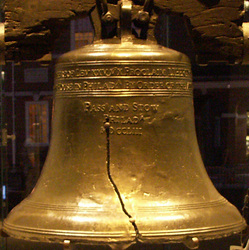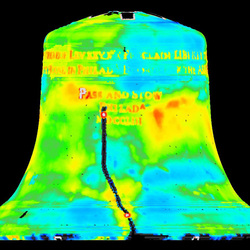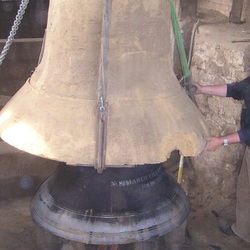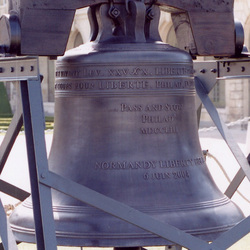Digital Restoration: Normandy Liberty Bell
|
The Story:
The Liberty Bell is one of America’s most iconic and important symbols always representing independence, freedom and equality. The bell was first cast in London in 1752, but cracked while it was being hung to test the sound. A second bell was cast locally and was quickly raised in Pennsylvania’s Statehouse Steeple in 1753. The famous bell tolled throughout the history of colonial Pennsylvania and the early United States, marking historical moments such as the Boston Tea Party, the signing of the Declaration of Independence and the ratification of the Constitution. |
|
|
Nearly 100 years after the bell was cast, the bell had begun to crack. In February of 1846, while being rung in commemoration of Washington’s Birthday, the bell retained the crack that we are all familiar with today. The infamous cracked bell traveled the country visiting expositions, celebrations and the Chicago World’s fair. The bell was continually “tapped” to symbolize liberty and independence on monumental occasions such as the 150th Anniversary of American’s independence and on the WWII D-day invasion of Normandy. return to full slide show
The Challenge:
Direct Dimensions was given the task of creating an exact digital replica of the Liberty Bell that would be cast to look and sound before it cracked in 1846. return to full slide show The Solution:
|
[email protected] copyright 1995-2011 Direct Dimensions, Inc 410-998-0880




